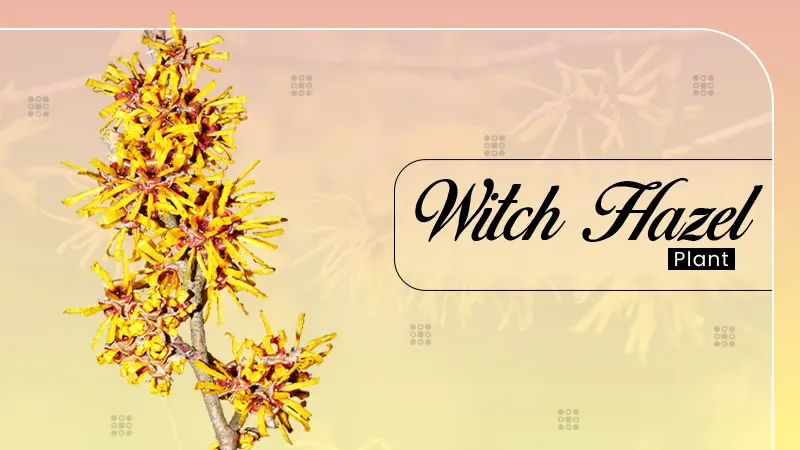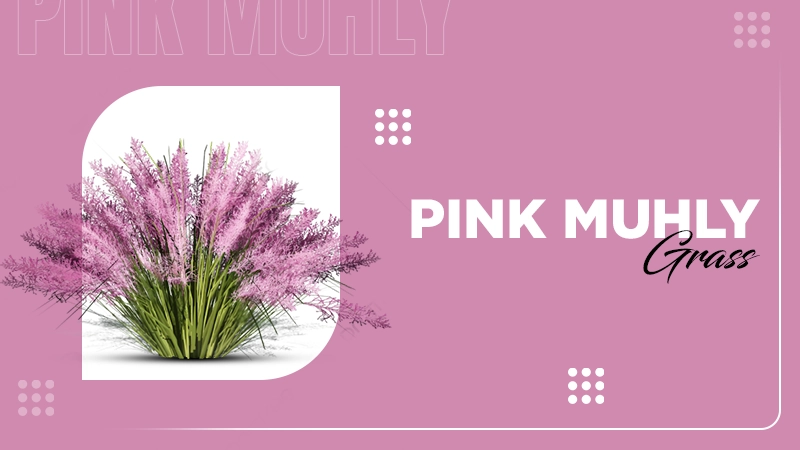Description
Do you also want to fill your garden with blooms during the winter dormancy period? Meet the Witch Hazel plant, a deciduous shrub that stands out for its indigenous charm and blooms even during the fall.
It gets its name from the Middle English word ‘wicke’, meaning lively. In addition, ‘wych or wice’ is an old Anglo-Saxon word meaning to bend, as the petals of this flower bend downwards.
Revered for centuries, these magical shrubs carry an unusual charm and significance in cultural folklore. Associated with protection and healing, it is symbolic of strength, tenacity, and resilience.
Used extensively for various landscapes like mixed beds and borders, screening, and hedges, this specimen plant is widely used in beauty products, holistic medicine, and wellness.
Let’s dive in and learn more about the Hamamelis Witch Hazel plant.
Explore the Botanical Background of the Witch Hazel Tree
The Hamamelis plant is native to North America and Asia. It features compact ribbon-like petals in hues of yellow, orange, and red, perfectly contrasting with the oval green leaves, which turn yellow during the fall.
To further appreciate the plant, take a look at the taxonomic background of this specimen.
| Plant Type | Perennial shrubs or small trees |
| Kingdom | Plantae |
| Clade | Tracheophytes |
| Clade | Angiosperms |
| Order | Saxifragales |
| Family | Hamamelidaceae |
| Genus | Hamamelis |
| Species | H. virginiana |
Being deciduous in nature, these plants shed their leaves every winter after changing their foliage color from green to yellow.
Benefits and Uses of Hamamelis Witch Hazel Plant
With unique spidery winter blooms and fall foliage, the Hamamelis tree is a perfect choice for landscaping designs and offers a myriad of benefits and uses. Read further to unveil its wide array of uses.
- Witch Hazel shrub is hardy, drought-tolerant, and adapts easily to various soil and climatic conditions, which makes it a go-to choice for landscaping.
- Barks and leaves of the Witchhazel tree are used for their astringent and anti-inflammatory properties to reduce inflammation and cure minor burns and insect bites.
- The extracts from Witch Hazel Virginiana are an essential element in skin care beauty products, and are used to minimize pores, acne, and oily textures.
- Witch Hazel flowers provide nectar and pollen to various bees, butterflies, and other insects during the winter, when the food source is limited due to dormancy in many plants.
| Do You Know?
As per the US Forest Service, Americans used the forked branches of the tree as dowsing or divining rods to spot underground water sources. |
To add on, these are also used as insect repellents, natural dyes, and a medicine to treat diarrhea and cramps.
How to Grow and Care for Witch Hazel Hamamelis?
Considered as drought-tolerant and a winter beacon, you can grow Witch Hazel using the following guidelines mentioned in the article below.
| Hardiness | 3-9 USDA |
| Witch Hazel Growth | 15-30 feet tall and 15-20 feet wide. |
| Light | Full sun to partial shade is preferred by the plant to prosper. |
| Watering | Regular watering is essential during the establishment phase; mature plants need watering only when the soil seems dry. |
| Soil Type | Prefers rich, loamy, well-draining soil with a slightly acidic to neutral soil pH of 4.5 – 6.5. |
| Fertilization | Feed balanced, slow-release liquid fertilizers during the spring and summer. |
| Pruning | Removing offshoots, deadheads, and leaves can encourage new blooms and keep the plant tidy. |
| Pest & Diseases | Susceptible to aphids, leaf spots, and powdery mildew, which can be treated using horticultural oil and insecticides. |
The best method of growing Witch Hazel is from seeds, although you can use softwood cuttings and layering for propagation.
Discover the Types of Witch Hazel Plants For Your Gardens
Witch Hazel Species primarily differ in their bloom time, growth habits, and flower color and fragrance. Continue reading to explore the different varieties of these indigenous plants.
- Hamamelis virginiana (American Witch Hazel): Blooms in autumn with spicy-scented yellow flowers.
- Hamamelis mollis (Chinese Witch Hazel): Yields buttery yellow flowers with a sweet fragrance during early January.
- Hamamelis japonica (Japanese Witch Hazel): Bears slightly fragrant flowers with yellow, red, and purple hues, mostly from late winter to early spring.
- Hamamelis vernalis (Ozark Witch Hazel): Popular for spicy-scented flowers with yellow to reddish-purple hues. It blooms mostly from late winter to early spring.
- Hamamelis ovalis (Big-Leaf witch Hazel): These are scarcely cultivated species that bears floral and musty-scented flowers with red or maroon shades. The bloom time ranges from January to February.
Each cultivar brings its charm and charisma and adds to the aesthetics of the place.
User Reviews & Ratings
Review: Spotted a Witch Hazel bush in the park. It’s amazing to see how the leaves have turned yellow during the fall.
Ratings: ⭐⭐⭐⭐⭐
Review: I smelled the flowers of my Witch hazel plant; it’s truly spicy and citrusy.
Ratings: ⭐⭐⭐⭐⭐
Review: I mixed Witch Hazel flowers with other blooms to make a unique arrangement. I am surprised that it worked so well.
Ratings: ⭐⭐⭐⭐⭐
Review: I planted this Witch Hazel plant a few months back. So many new leaves have appeared.
Ratings: ⭐⭐⭐⭐⭐
Can a Hamamelis tree grow in full shade?
No, these trees thrive in full sun to partial shade. Fully shaded areas can hamper the growth.
Is the H. virginiana plant invasive?
They are generally not considered invasive and do not spread aggressively to outcompete other plants.
Are Witch Hazel plants edible?
It is not suggested for oral consumption, although the plant is used as a constituent in many medicines.
Can Hamamelis virginiana trees be planted indoors?
The extensive root system does not make it a suitable plant to be grown indoors, although its flowers can be used indoors as cut arrangements.












Reviews
There are no reviews yet.